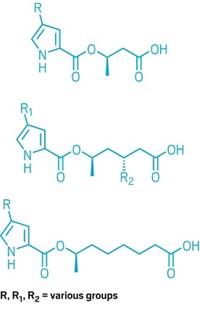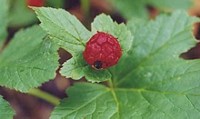Advertisement
Grab your lab coat. Let's get started
Welcome!
Welcome!
Create an account below to get 6 C&EN articles per month, receive newsletters and more - all free.
It seems this is your first time logging in online. Please enter the following information to continue.
As an ACS member you automatically get access to this site. All we need is few more details to create your reading experience.
Not you? Sign in with a different account.
Not you? Sign in with a different account.
ERROR 1
ERROR 1
ERROR 2
ERROR 2
ERROR 2
ERROR 2
ERROR 2
Password and Confirm password must match.
If you have an ACS member number, please enter it here so we can link this account to your membership. (optional)
ERROR 2
ACS values your privacy. By submitting your information, you are gaining access to C&EN and subscribing to our weekly newsletter. We use the information you provide to make your reading experience better, and we will never sell your data to third party members.
Biological Chemistry
Licorice may aid battle against dental cavities
February 6, 2006
| A version of this story appeared in
Volume 84, Issue 6
Compounds isolated from licorice root (Glycyrrhiza uralensis) have been shown in bioassays to exhibit potent antibacterial activity against Streptococcus mutans, an oral pathogen that causes tooth decay (J. Nat. Prod. 2006, 69, 121). That means chewing on licorice candy may help reduce cavities or combat other problem bacteria, researchers speculate. Wenyuan Shi, Qing-Yi Lu, and their colleagues at the University of California, Los Angeles, discovered two new pterocarpene compounds (glycyrrhizol A and B) and isolated four previously known flavonoids from the root and characterized the compounds by several spectroscopic methods. The team used bioassays to test the antibacterial properties of the compounds; glycyrrhizol A (shown) exhibited the strongest activity against S. mutans. Licorice is an important herb in Chinese medicine, and its derivatives are used worldwide as flavoring and sweetening agents in tobacco, gum, candy, and beverages. Although further testing is needed, toothpaste companies are interested in the new compounds, Shi says.






Join the conversation
Contact the reporter
Submit a Letter to the Editor for publication
Engage with us on Twitter